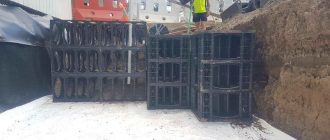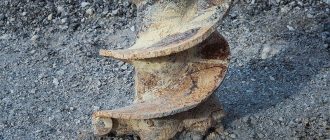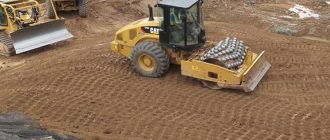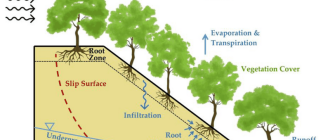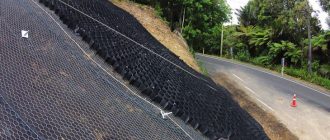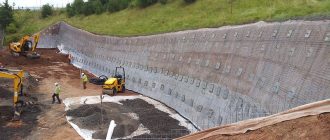Improving Soil Stability: Techniques and Characteristics for Enhanced Performance
Soil stability is a crucial factor in various industries and applications, such as agriculture, construction, and environmental management. The stability of soil refers to its ability to resist deformation, erosion, and other forms of degradation. Unstable soil can lead to a range of problems, including land erosion, slope failures, and reduced crop productivity.
Fortunately, there are several methods and properties that can be employed to enhance soil stability. One of the key methods is the use of soil additives or amendments. These additives, such as organic matter, lime, and cement, can improve the physical properties of the soil, including its cohesion and shear strength. By adding these substances, soil stability can be significantly increased, preventing erosion and improving its load-bearing capacity.
In addition to soil additives, proper soil management practices can also contribute to enhanced stability. This includes techniques such as contour plowing, terracing, and cover cropping, which help to reduce water runoff and soil erosion. By implementing these practices, the soil is better protected from external forces, such as heavy rainfall or wind, which can lead to destabilization.
Furthermore, soil properties play a crucial role in determining its stability. The texture, structure, and composition of the soil can greatly influence its resistance to erosion and deformation. For example, soils with a higher clay content tend to have better stability due to their cohesive nature. Additionally, well-structured soils with good aggregation and pore spaces can also provide improved stability.
Overall, enhancing soil stability is a multidimensional approach that involves the use of additives, proper management practices, and understanding soil properties. By implementing these methods and considering the unique characteristics of the soil, it is possible to create a stable and productive environment for various applications.
Factors Contributing to Increased Soil Stability
Soil stability refers to the ability of soil to resist erosion and maintain its structure and integrity. There are several factors that contribute to increased soil stability, including:
1. Organic matter content: The presence of organic matter in the soil can significantly enhance its stability. Organic matter acts as a binding agent, improving soil structure and preventing erosion. It also increases water holding capacity and promotes the growth of soil microorganisms, which further contribute to soil stability.
2. Soil structure: The arrangement and organization of soil particles play a crucial role in soil stability. Well-aggregated soils with a good crumb structure are more resistant to erosion. The presence of stable aggregates allows for better water infiltration and reduces surface runoff, minimizing the risk of erosion.
3. Soil texture: The texture of soil, which refers to the relative proportions of sand, silt, and clay particles, affects its stability. Clay soils tend to have better stability than sandy soils due to their smaller particle size and higher water holding capacity. However, a balanced texture with a mixture of particle sizes can also contribute to improved stability.
4. Root systems: The presence of a dense and well-developed root system can significantly enhance soil stability. Plant roots help to bind the soil particles together, preventing erosion. They also improve soil structure by creating channels for water infiltration and nutrient uptake.
5. Land management practices: Proper land management practices, such as contour plowing, terracing, and crop rotation, can contribute to increased soil stability. These practices help to reduce surface runoff and erosion by minimizing the impact of rainfall and promoting better water infiltration. Additionally, avoiding overgrazing and maintaining vegetative cover can also enhance soil stability.
Overall, a combination of these factors can greatly contribute to increased soil stability, reducing the risk of erosion and promoting sustainable land management practices.
What Increases Soil Stability?
Soil stability refers to the ability of soil to resist erosion and maintain its structure and composition. Several factors contribute to increasing soil stability:
Organic Matter: The presence of organic matter in soil plays a crucial role in enhancing soil stability. Organic matter improves soil structure, increases water-holding capacity, and promotes the formation of stable aggregates. It also provides nutrients for plants and microorganisms, which further contribute to soil stability.
Root Systems: Plant roots play a significant role in increasing soil stability. They help bind soil particles together, preventing erosion and improving soil structure. The extensive root systems of plants create channels for water infiltration, reducing surface runoff and erosion. Additionally, root exudates can enhance soil aggregation and promote the growth of beneficial soil microorganisms.
Soil Moisture: Adequate soil moisture is crucial for soil stability. Dry soils are more prone to erosion and have reduced stability due to decreased cohesion between soil particles. Optimal soil moisture levels promote the formation of stable aggregates and improve the binding of soil particles, preventing erosion.
Soil Texture: Soil texture, which refers to the relative proportions of sand, silt, and clay particles, influences soil stability. Soils with a higher clay content tend to have better stability due to the cohesive nature of clay particles. Clay particles can bind together, forming stable aggregates that resist erosion. However, a balance of different particle sizes is essential for optimal soil stability.
Soil Structure: The arrangement of soil particles and their aggregation into stable structures greatly impacts soil stability. Well-aggregated soils have larger pore spaces, allowing for better water infiltration and root penetration. Soil structure can be improved through practices such as proper tillage, organic matter addition, and avoiding compaction.
Soil Microorganisms: Soil microorganisms, such as bacteria and fungi, contribute to soil stability by breaking down organic matter and creating binding agents. These microorganisms produce substances like glues and polysaccharides that help bind soil particles together, increasing soil stability. The presence of a diverse and healthy microbial community is essential for maintaining soil stability.
Land Management Practices: Proper land management practices, such as contour plowing, terracing, and cover cropping, can significantly enhance soil stability. These practices help reduce soil erosion by slowing down water runoff, improving water infiltration, and promoting the formation of stable soil aggregates.
In conclusion, soil stability can be increased through various factors, including the presence of organic matter, root systems, adequate soil moisture, suitable soil texture, proper soil structure, beneficial soil microorganisms, and appropriate land management practices. Implementing these factors can help protect soil from erosion, maintain its structure, and promote sustainable agricultural and land-use practices.
The Role of Lime in Improving Soil Stability
Lime is a commonly used material in the field of soil stabilization. It plays a crucial role in improving soil stability and enhancing its properties. Lime is typically added to soils to increase their pH levels and reduce their plasticity.
One of the main benefits of lime in soil stabilization is its ability to increase the soil’s load-bearing capacity. Lime reacts chemically with clay minerals in the soil, causing them to flocculate and bind together. This process creates stronger soil aggregates, which can withstand higher loads and pressures.
In addition to its load-bearing capacity, lime also helps to reduce soil swelling and shrinkage. By increasing the pH of the soil, lime neutralizes the negative charges on clay particles, preventing them from attracting water molecules and expanding. This helps to minimize the volume changes that occur in the soil due to wetting and drying cycles.
Furthermore, lime improves the workability of the soil. It reduces the plasticity of clay soils, making them easier to handle and compact. This is particularly important in construction projects where the soil needs to be properly compacted to provide a stable foundation for structures.
Another advantage of lime in soil stabilization is its ability to stabilize fine-grained soils. Fine-grained soils, such as silts and clays, are often unstable and prone to erosion. Lime helps to bind the particles together, preventing them from being washed away by water or wind.
Overall, lime plays a vital role in improving soil stability by increasing load-bearing capacity, reducing swelling and shrinkage, improving workability, and stabilizing fine-grained soils. Its application in soil stabilization projects can significantly enhance the properties of soils, making them more suitable for construction and other engineering purposes.
Polymer-Based Enhancements in Soil Stability
Soil stability is a critical factor in various industries, including construction, agriculture, and environmental management. Unstable soil can lead to erosion, landslides, and other detrimental effects. To address this issue, researchers have been exploring various methods to enhance soil stability. One promising approach is the use of polymers.
Polymers are large molecules made up of repeating subunits. They can be natural or synthetic and have a wide range of applications. In the context of soil stability, polymers can be used to modify soil properties and improve its overall stability.
One common type of polymer used for soil stabilization is polyacrylamide (PAM). PAM is a synthetic polymer that can absorb and retain water, making it effective in preventing soil erosion. When applied to the soil, PAM forms a network that binds soil particles together, increasing its cohesion and preventing erosion.
Another type of polymer used for soil stability is biopolymer-based hydrogels. These hydrogels are made from natural polymers such as starch or cellulose. They have the ability to absorb and retain large amounts of water, improving soil moisture content and reducing the risk of drought-induced soil instability.
In addition to improving soil stability, polymer-based enhancements can also have other beneficial effects. For example, they can increase soil water holding capacity, improve nutrient retention, and reduce soil compaction.
Overall, polymer-based enhancements offer a promising solution for improving soil stability. By modifying soil properties and increasing its cohesion, polymers can help prevent erosion, landslides, and other soil-related issues. Further research and development in this field are needed to optimize polymer formulations and application methods for different soil types and environmental conditions.
Soil Characteristics and Engineering Properties
Understanding the soil characteristics and engineering properties is crucial in order to effectively enhance soil stability. The properties of soil can greatly influence its stability, permeability, and ability to support structures. By studying these properties, engineers can make informed decisions and employ appropriate methods to enhance the stability of soil.
One of the key characteristics of soil is its composition. Soil is typically composed of mineral particles, organic matter, water, and air. The proportions of these components can vary greatly, leading to different soil types such as clay, silt, sand, and loam. Each soil type has its own unique properties that affect its stability and engineering behavior.
The particle size distribution of soil also plays a significant role in its engineering properties. Soils with a high percentage of fine particles, such as clay, tend to have high compressibility and low permeability. Coarse-grained soils, on the other hand, like sand and gravel, have higher permeability but lower compressibility. The particle size distribution can affect soil stability, as well as the ability of water to flow through the soil.
Soil compaction is another important engineering property. Compaction refers to the process of increasing the density of soil by applying mechanical pressure. Proper compaction is essential to improve soil stability and reduce settlement. Compacted soil has increased shear strength and reduced permeability, making it more suitable for supporting structures.
Furthermore, the moisture content of soil significantly affects its engineering properties. The amount of water in the soil can influence its strength, compressibility, and permeability. The optimum moisture content is the moisture level at which the soil achieves maximum compaction and engineering properties. Engineers must consider the moisture content when designing soil stabilization methods.
Conclusion, understanding the soil characteristics and engineering properties is essential for enhancing soil stability. Factors such as composition, particle size distribution, compaction, and moisture content all contribute to the engineering behavior of soil. By analyzing these properties, engineers can implement appropriate methods to improve soil stability and ensure the long-term success of structures built on soil.
How Lime Alters Soil Properties and Behavior
Lime, or calcium carbonate, is a commonly used soil amendment that can significantly alter the properties and behavior of soil. When applied to acidic soils, lime raises the soil pH, making it less acidic and more alkaline. This change in pH can have several effects on soil properties and behavior.
One of the primary effects of lime on soil is the improvement of soil structure. Acidic soils tend to have poor structure, with particles clumping together and forming hard, compacted layers. Lime helps to break up these clumps and improve the soil’s friability. This allows for better water infiltration and root penetration, leading to healthier plant growth.
In addition to improving soil structure, lime also enhances nutrient availability. Acidic soils often have low nutrient availability because the acidic conditions inhibit the release of nutrients from organic matter and minerals. By raising the pH, lime promotes the decomposition of organic matter and the release of nutrients. This makes essential nutrients more readily available to plants, improving their growth and productivity.
Lime can also reduce the toxicity of certain elements in the soil. Acidic conditions can cause elements like aluminum and manganese to become more soluble and toxic to plants. Lime reacts with these elements, forming insoluble compounds that are less available and less toxic. This helps to alleviate nutrient imbalances and reduce the risk of plant toxicity.
Furthermore, lime can enhance the microbial activity in the soil. Acidic conditions can inhibit the growth and activity of beneficial soil microorganisms, such as bacteria and fungi. By increasing the pH, lime creates a more favorable environment for these microorganisms, promoting their growth and activity. This can improve soil fertility and nutrient cycling, leading to healthier and more productive soils.
Lime is a valuable soil amendment that can significantly alter soil properties and behavior. By raising the pH, lime improves soil structure, enhances nutrient availability, reduces element toxicity, and promotes microbial activity. These changes contribute to healthier and more productive soils, ultimately benefiting plant growth and agricultural productivity.
Effect of Polymers on Plasticity and Agglomeration
Polymers play a crucial role in enhancing soil stability by modifying its properties. One important aspect is their effect on soil plasticity and agglomeration.
When polymers are added to soil, they can significantly reduce its plasticity. Plasticity refers to the ability of soil to deform under stress and retain its shape after the stress is removed. High plasticity soils are prone to excessive deformation and cracking, leading to instability. By reducing plasticity, polymers improve the soil’s resistance to deformation, making it more stable.
In addition to reducing plasticity, polymers also enhance soil agglomeration. Agglomeration refers to the process of particles sticking together to form larger aggregates. This is important for improving soil structure and stability. Polymers act as binding agents, promoting the formation of stable aggregates by attracting and holding particles together. The resulting aggregates have increased strength and resistance to erosion.
Moreover, polymers can also improve the water-retention capacity of soil. They can absorb and retain water, preventing excessive drying and enhancing soil moisture content. This is particularly beneficial in arid regions where water availability is limited. By maintaining optimal moisture levels, polymers contribute to soil stability and support plant growth.
It is worth noting that the effectiveness of polymers in enhancing soil stability depends on various factors such as polymer type, concentration, and soil properties. Different polymers have different abilities to reduce plasticity and promote agglomeration. Therefore, it is essential to select the appropriate polymer and application method based on specific soil conditions.
In conclusion, polymers have a significant impact on soil plasticity and agglomeration. By reducing plasticity and promoting agglomeration, polymers enhance soil stability and improve its resistance to deformation and erosion. Their ability to retain water further supports soil stability and plant growth. Understanding the effect of polymers on soil properties is crucial for implementing effective soil stabilization methods.
Cement’s Influence on Soil Strength and Stiffness
Cement is a commonly used material in soil stabilization and improvement projects. It plays a significant role in enhancing soil strength and stiffness, which are crucial factors in ensuring the stability of various structures and preventing soil erosion.
When cement is mixed with soil, it undergoes a chemical reaction known as hydration, which results in the formation of cementitious compounds. These compounds bind the soil particles together, creating a more cohesive and compacted soil matrix.
The addition of cement to soil improves its strength by increasing the soil’s bearing capacity. This means that the soil can support heavier loads without significant deformation or settlement. It also enhances the soil’s resistance to shear forces, making it more stable and less susceptible to failure under lateral pressure.
In addition to increasing soil strength, cement also improves the stiffness of the soil. Stiffness refers to the ability of the soil to resist deformation under applied loads. A stiffer soil can better distribute the load and minimize settlement, ensuring the long-term stability of structures built on it.
Cement-treated soil also exhibits reduced permeability, meaning it has a lower tendency to allow water to flow through it. This is beneficial in preventing the saturation of the soil, as excess water can weaken its structural integrity. The reduced permeability also helps in controlling groundwater flow and reducing the risk of soil erosion.
Overall, the addition of cement to soil offers numerous benefits in terms of improving soil strength, stiffness, and stability. It is a cost-effective and widely used method for enhancing the performance of soils in various construction and engineering projects.
Construction Techniques
Construction techniques are vital in enhancing soil stability and preventing erosion. Various methods can be employed to improve the properties of soil and ensure its long-term stability.
1. Terracing: Terracing involves creating a series of level platforms on sloping terrain. This technique helps to reduce soil erosion by slowing down the flow of water and preventing it from washing away the topsoil.
2. Retaining walls: Retaining walls are structures built to hold back soil or rock. They provide support and stability to slopes and prevent soil erosion. Retaining walls can be constructed using various materials such as concrete, stone, or timber.
3. Soil stabilization: Soil stabilization techniques involve adding materials to the soil to improve its physical properties. This can include adding cement, lime, or fly ash to increase the soil’s strength and reduce its susceptibility to erosion.
4. Slope reinforcement: Slope reinforcement techniques are used to strengthen the stability of slopes. This can be achieved through methods such as installing geosynthetic materials like geotextiles or geogrids, which provide additional support to the soil.
5. Vegetation: Planting vegetation is an effective way to enhance soil stability. The roots of plants help bind the soil particles together, preventing erosion. Vegetation also acts as a natural barrier, reducing the impact of rainfall and wind on the soil surface.
6. Drainage systems: Proper drainage is essential for maintaining soil stability. Installing drainage systems, such as French drains or subsurface drains, helps to remove excess water from the soil, preventing it from becoming saturated and losing its stability.
By implementing these construction techniques, soil stability can be significantly improved, ensuring the long-term integrity of infrastructure and preventing soil erosion.
How Lime and Cement Improve Constructability
Lime and cement are widely used in construction projects to improve soil stability and enhance the constructability of the site. These materials offer several benefits that contribute to the overall success of the project.
One of the main advantages of lime and cement is their ability to increase the strength and stability of the soil. When mixed with soil, lime and cement chemically react with the clay particles, creating a binding effect that improves the cohesion and load-bearing capacity of the soil. This is particularly beneficial in areas with weak or unstable soils, as it helps to prevent settlement and improve the overall stability of the construction.
In addition to improving soil strength, lime and cement also improve the workability of the soil. By reducing the plasticity and shrinkage of clay soils, these materials make it easier to excavate and shape the soil during construction. This is especially important in projects where precise grading and leveling are required, as it allows for better control over the final shape and dimensions of the site.
Furthermore, lime and cement can also enhance the durability of the soil. By stabilizing the soil and reducing its susceptibility to erosion and weathering, these materials help to prolong the lifespan of the construction. This is especially important in areas with high rainfall or where the site is exposed to harsh environmental conditions, as it helps to prevent the degradation of the soil and maintain the integrity of the structure.
Overall, the use of lime and cement in construction projects offers numerous advantages that improve the constructability of the site. From increasing soil strength and stability to enhancing workability and durability, these materials play a crucial role in ensuring the success and longevity of the construction.
Application Methods for Polymer-Based Stabilization
Polymer-based stabilization is a commonly used method to enhance soil stability and prevent erosion. The application of polymers can be done using different methods depending on the specific project and soil conditions.
One common method is to apply the polymer as a liquid solution. The liquid polymer is typically sprayed onto the soil surface using specialized equipment. This method is effective for stabilizing large areas and can be used for both flat and sloped terrain. The liquid polymer penetrates the soil and binds the particles together, creating a more stable soil structure. It also helps to reduce water infiltration and improve the soil’s ability to retain moisture.
Another method is to mix the polymer with soil before it is placed on the project site. This method is often used for construction projects where the soil needs to be stabilized before building structures. The polymer is mixed with the soil using a variety of mixing equipment, such as a bulldozer or a soil stabilizer. The mixture is then spread and compacted to create a stable base for construction. This method is particularly useful for areas with poor soil conditions or high erosion potential.
In some cases, polymers can also be applied in the form of pre-applied sheets or mats. These sheets are made of a polymer material that slowly releases the polymer into the soil over time. The sheets are typically laid on the soil surface and covered with a layer of soil or other protective material. This method is often used for revegetation projects or areas with high slope stability requirements. The sheets provide a consistent release of polymer, ensuring long-term stabilization of the soil.
Regardless of the application method used, it is important to consider the specific properties of the polymer and the soil conditions. The polymer should be selected based on its compatibility with the soil type and the desired level of stabilization. The application method should also be adapted to the site-specific conditions to ensure optimal results.
In conclusion, polymer-based stabilization offers a versatile solution for enhancing soil stability. The application methods discussed above provide options for different project requirements and soil conditions. By choosing the appropriate method and considering the specific properties of the polymer and soil, engineers and contractors can effectively stabilize soil and prevent erosion.
Differences in Compaction for Enhanced Soil Stability
Compaction is a crucial factor in enhancing soil stability. By increasing the density of the soil, compaction improves its load-bearing capacity and reduces the risk of settlement and erosion. However, different compaction methods can yield varying results in terms of soil stability.
One common method of compaction is mechanical compaction, which involves using heavy machinery to apply pressure on the soil. This method is effective in increasing soil density and stability, especially in cohesive soils. The machinery used for mechanical compaction includes rollers, compactors, and vibratory plates.
Another method of compaction is dynamic compaction, which is particularly suitable for loose or granular soils. In this method, energy is applied to the soil through repeated impacts or vibrations. The energy causes particles to rearrange and settle more tightly, thus increasing soil stability. Dynamic compaction is commonly used for stabilizing areas affected by loose sands, silts, or gravels.
An alternative to mechanical and dynamic compaction is chemical compaction. This method involves adding chemicals to the soil to increase its stability. Chemical additives, such as lime or cement, react with the soil particles, resulting in the formation of cementitious compounds. These compounds bind the soil particles together, increasing its strength and stability.
The choice of compaction method depends on various factors, including soil type, moisture content, and project requirements. It is essential to assess and analyze the soil conditions before selecting the most appropriate compaction method. By understanding the differences in compaction techniques, engineers and construction professionals can effectively enhance soil stability and ensure the long-term success of their projects.
Factors Affecting Soil Stability
Soil stability refers to the ability of soil to resist erosion and maintain its structure and composition over time. Several factors can influence soil stability, including:
1. Soil Texture: The texture of soil, which refers to the relative proportions of sand, silt, and clay particles, plays a significant role in soil stability. Soils with a higher clay content tend to have better stability due to the cohesive nature of clay particles.
2. Soil Structure: The arrangement and organization of soil particles into aggregates also influence soil stability. Well-structured soils with stable aggregates are more resistant to erosion compared to soils with poor structure.
3. Organic Matter Content: The presence of organic matter in soil can improve stability by enhancing soil structure and promoting the formation of stable aggregates. Organic matter acts as a binding agent, helping to hold soil particles together.
4. Moisture Content: The moisture content of soil affects its stability. When soil is too dry, it becomes brittle and more susceptible to erosion. On the other hand, excessive moisture can lead to soil saturation, reducing its stability.
5. Vegetation Cover: The presence of vegetation plays a crucial role in soil stability. Plant roots help to bind soil particles and create a network of channels that enhance water infiltration and reduce erosion. Vegetation cover also protects the soil surface from the impact of raindrops.
6. Slope Gradient: The slope gradient of the land influences soil stability. Steeper slopes are more prone to erosion compared to gentle slopes due to the increased force of gravity acting on the soil particles.
7. Land Management Practices: Human activities, such as improper land management practices, can negatively impact soil stability. Overgrazing, improper tillage, and deforestation can disrupt the soil structure and increase the risk of erosion.
By understanding and managing these factors, it is possible to enhance soil stability and reduce the risk of soil erosion and degradation.
Key Factors Reducing Stabilized Soil Stability
Stabilizing soil is crucial for various construction projects, as it ensures the durability and longevity of structures. However, certain factors can undermine the stability of stabilized soil, leading to potential issues and failures. Understanding these key factors is essential for implementing effective soil stabilization techniques.
One of the main factors that reduce stabilized soil stability is excessive moisture. When the soil becomes saturated, its strength and stability significantly decrease. Excess water can wash away the binding agents used in stabilization, compromising the cohesion and adhesion of the soil particles. Additionally, saturated soil is prone to swelling and shrinkage, which further weaken its stability.
Another factor that negatively affects stabilized soil stability is inadequate compaction. Insufficient compaction during the stabilization process leads to poor soil density, resulting in reduced stability and load-bearing capacity. Inadequate compaction can leave voids and air pockets in the soil, which can cause settlement and deformation under load.
Poor drainage is also a significant factor that reduces stabilized soil stability. When water cannot properly drain from the soil, it accumulates and increases pore pressure. This excess pore pressure can cause soil liquefaction, where the soil loses its strength and behaves like a liquid. Liquefaction can lead to significant ground settlement and structural failures.
The presence of organic matter in the soil can also compromise its stability. Organic matter, such as decomposed vegetation or peat, has a high water-holding capacity and can increase soil plasticity. This increased plasticity reduces the soil’s shear strength and stability, making it more susceptible to erosion and deformation.
Inadequate maintenance and monitoring of stabilized soil can also contribute to its reduced stability. Without proper upkeep, the binding agents used in stabilization can degrade over time, diminishing their effectiveness. Regular inspections and maintenance are essential to identify any issues and address them promptly to maintain optimal stability.
Key Factors Reducing Stabilized Soil Stability
| Factors | Description |
|---|---|
| Excessive Moisture | Leads to decreased soil strength and stability, washes away binding agents, and causes swelling and shrinkage. |
| Inadequate Compaction | Results in poor soil density, leaving voids and air pockets that reduce stability and load-bearing capacity. |
| Poor Drainage | Causes water accumulation, increased pore pressure, and potential soil liquefaction, leading to settlement and failures. |
| Presence of Organic Matter | High water-holding capacity and increased plasticity reduce shear strength and stability, making the soil more prone to erosion and deformation. |
| Inadequate Maintenance and Monitoring | Failure to properly upkeep and inspect the stabilized soil can result in the degradation of binding agents and decreased stability over time. |
Long-Term Performance Considerations in Soil Stability
When considering methods and properties for enhancing soil stability, it is important to also take into account the long-term performance of these measures. While short-term improvements in soil stability may be achieved through various techniques such as compaction, reinforcement, and vegetation, it is crucial to evaluate how these measures will hold up over time.
One key consideration for long-term soil stability is the potential for erosion. Erosion can significantly impact the stability of the soil, leading to slope failures and loss of soil mass. Therefore, it is important to implement measures that not only improve initial stability but also provide long-term erosion control. This can be achieved through the use of erosion control blankets, retaining walls, and vegetative cover.
Another factor to consider is the potential for settlement. Over time, soil can undergo settlement due to various factors such as consolidation, compaction, and natural processes. Settlement can compromise the stability of structures built on the soil, leading to structural failures. To mitigate settlement, it is important to properly prepare the soil through techniques such as preloading, soil stabilization, and proper compaction methods.
Furthermore, the long-term performance of soil stability measures can be affected by environmental factors such as climate and groundwater conditions. For example, freeze-thaw cycles can weaken the soil, making it more susceptible to erosion and settlement. Similarly, changes in groundwater levels can affect the pore pressure within the soil, leading to instability. Therefore, it is crucial to consider these environmental factors when designing and implementing soil stability measures.
Overall, when enhancing soil stability, it is important to not only focus on short-term improvements but also consider the long-term performance of these measures. By taking into account factors such as erosion, settlement, and environmental conditions, it is possible to design and implement effective soil stability measures that will provide long-lasting stability and prevent potential failures.
Choosing the Most Effective Method for the Job
When it comes to enhancing soil stability, there are several methods that can be employed. Each method has its own advantages and disadvantages, and the choice of method will depend on various factors such as the type of soil, the site conditions, and the desired outcome.
One of the most common methods used to enhance soil stability is the addition of organic matter. Organic matter, such as compost or manure, can improve soil structure and increase its ability to hold water. This method is particularly effective for sandy soils, which tend to have poor stability due to their loose structure.
Another method that can be used is the addition of chemical stabilizers. Chemical stabilizers, such as lime or cement, can react with the soil particles and create bonds that strengthen the soil structure. This method is often used for clay soils, which have a tendency to become compacted and lose their stability.
In some cases, mechanical methods may be required to enhance soil stability. These methods involve the use of machinery to physically alter the soil, such as by compaction or excavation. Mechanical methods can be effective for a wide range of soil types and can be used to achieve specific outcomes, such as creating a level surface or increasing soil density.
When choosing the most effective method for the job, it is important to consider the specific requirements of the project. Factors such as the time and budget constraints, the availability of resources, and the environmental impact should all be taken into account. Consulting with a soil engineer or a geotechnical expert can also be helpful in determining the best method to use.
Ultimately, the goal of enhancing soil stability is to create a solid foundation that can support various structures and prevent erosion. By carefully considering the different methods available and their suitability for the specific project, it is possible to achieve long-lasting and effective results.
Question-answer:
What are some common methods to enhance soil stability?
Some common methods to enhance soil stability include adding organic matter to improve soil structure, using erosion control measures such as terracing and contour plowing, and practicing proper irrigation and drainage techniques.
How does adding organic matter improve soil stability?
Adding organic matter to soil improves its stability by increasing its ability to retain moisture, improving its structure and aggregation, and enhancing its nutrient-holding capacity. This helps to prevent erosion and maintain soil stability.
What are some erosion control measures that can enhance soil stability?
Some erosion control measures that can enhance soil stability include terracing, contour plowing, and the use of cover crops. Terracing involves creating level platforms on slopes to slow down water runoff and prevent erosion. Contour plowing involves plowing along the contour lines of the land to create ridges and furrows that help to retain water and prevent erosion. Cover crops, such as grasses or legumes, can also be planted to provide a protective cover for the soil and reduce erosion.
Why is proper irrigation and drainage important for soil stability?
Proper irrigation and drainage are important for soil stability because they help to control the amount of water in the soil. Over-irrigation can lead to waterlogged soil, which can cause instability and erosion. Poor drainage can also lead to water accumulation in the soil, leading to similar problems. Therefore, it is crucial to practice proper irrigation and drainage techniques to maintain soil stability.
How does soil structure affect soil stability?
Soil structure refers to the way individual soil particles are arranged and held together. A well-structured soil with good aggregation is more stable and less prone to erosion. This is because the aggregates provide stability and resistance to the forces of wind and water. On the other hand, a poorly structured soil with weak aggregation is more susceptible to erosion and instability.
What are some common methods for enhancing soil stability?
Some common methods for enhancing soil stability include slope stabilization, erosion control, and soil compaction.
How does slope stabilization help enhance soil stability?
Slope stabilization helps enhance soil stability by preventing soil erosion and landslides on steep slopes.
What is erosion control and how does it contribute to soil stability?
Erosion control refers to the techniques and practices used to prevent soil erosion. It contributes to soil stability by protecting the top layer of soil from being washed away by water or wind.
What is soil compaction and why is it important for soil stability?
Soil compaction is the process of increasing the density of soil particles. It is important for soil stability because compacted soil is less prone to erosion and can better support structures and vegetation.
Are there any natural methods for enhancing soil stability?
Yes, there are natural methods for enhancing soil stability. Planting vegetation, such as grass or trees, can help stabilize soil by providing root systems that bind the soil particles together and reduce erosion.

